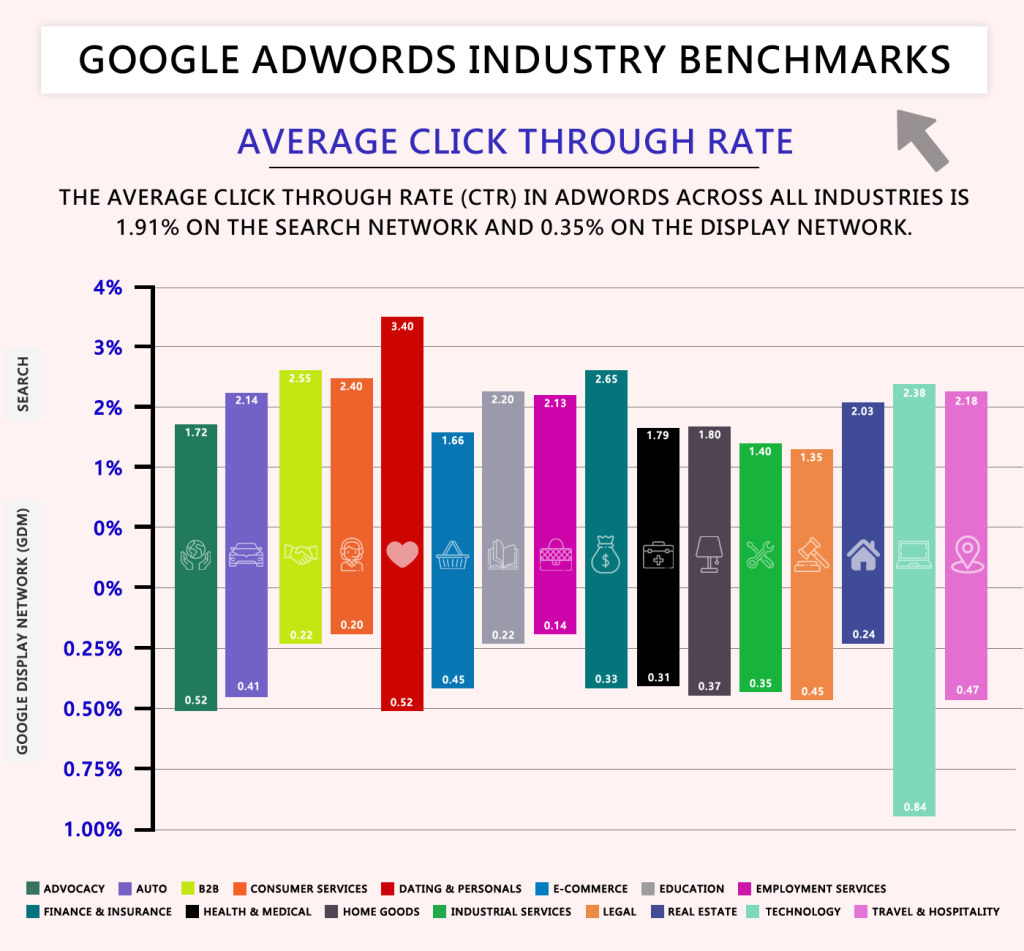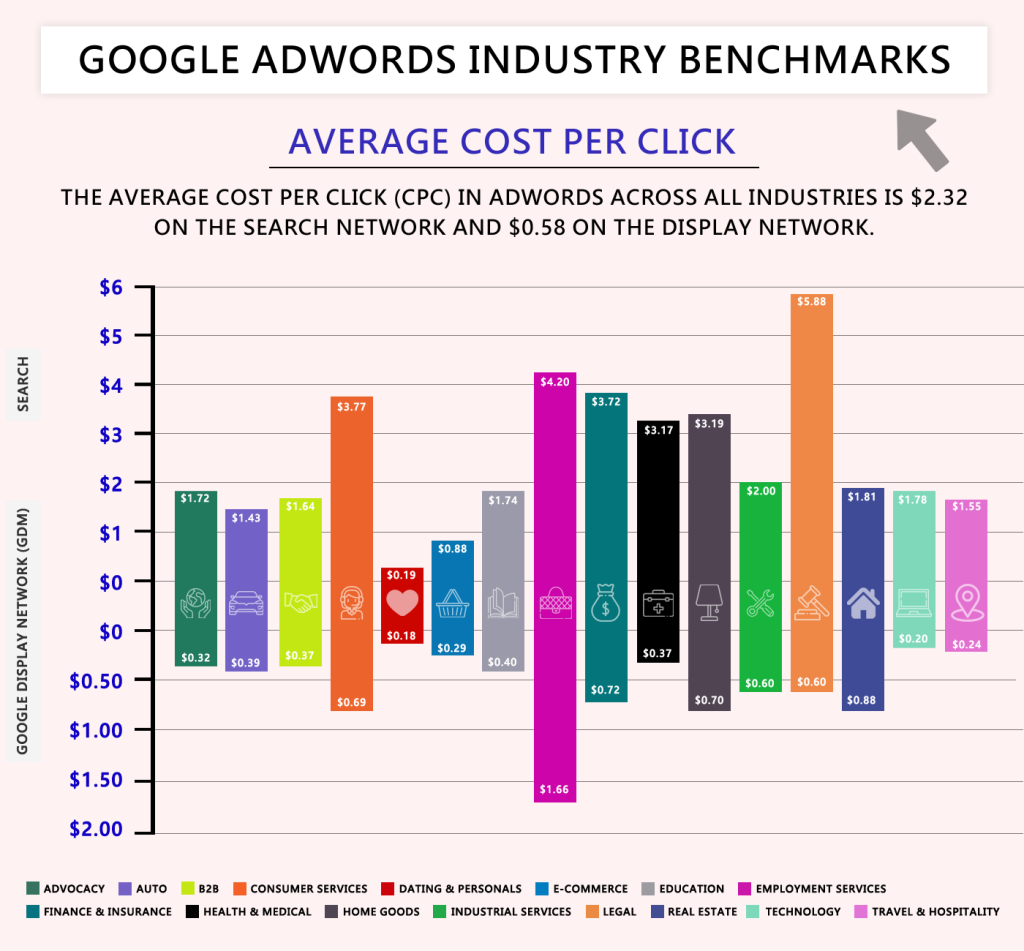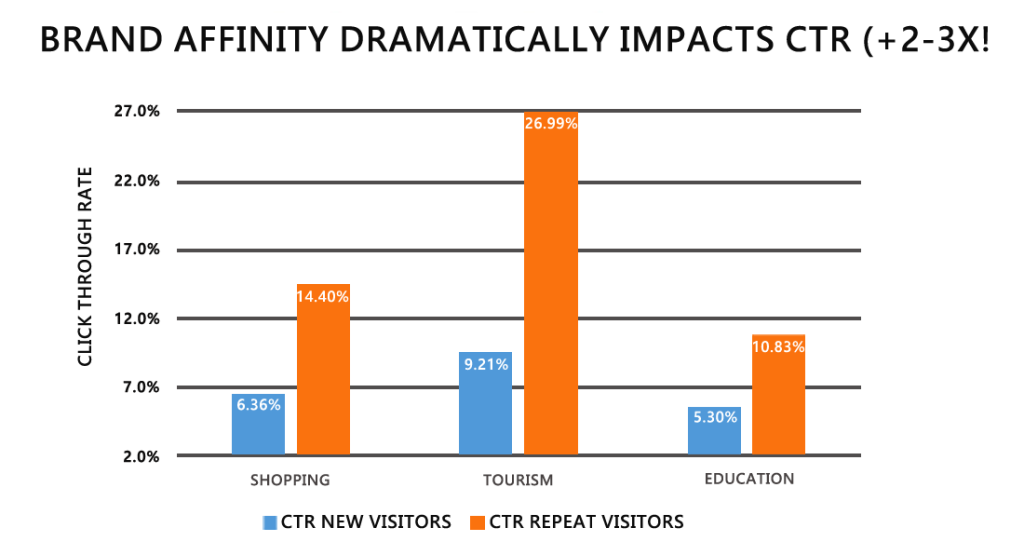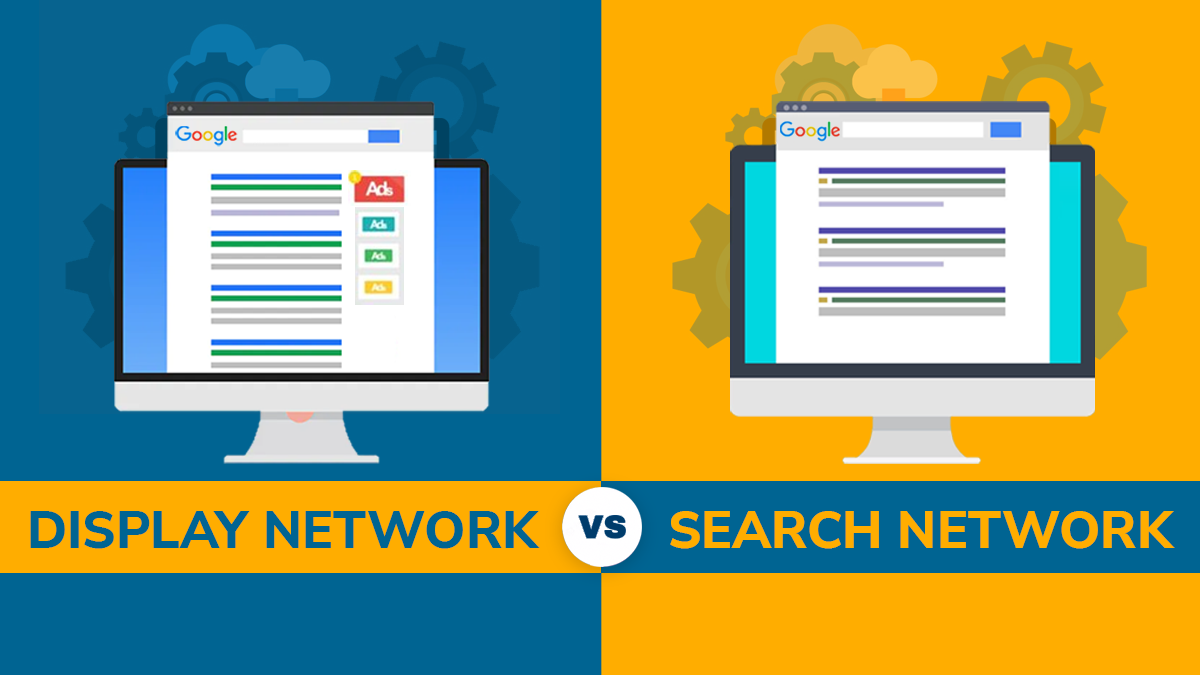Google stands as a dominant force in the ever-changing landscape of digital advertising, offering a range of advertising solutions to businesses across the globe. Two key pillars underpin its diverse advertising platforms: the Google Search Network and the Google Display Network. While both networks serve as crucial channels for connecting with potential clients, they differ significantly in their functionality and reach.
Grasping the difference between the Display Network vs Search Network is essential for companies aiming to optimize their advertising campaigns and effectively reach their target audience. This post delves into the fundamental differences between Google’s Search Network and Display Network, highlighting their distinct features, advantages, and best practices.
Google Display Network vs Search Network
Google offers two unique advertising platforms: Google Search Network and Google Display Network. Here’s a side-by-side comparison:
Google Search Network (GSN)
- The Google Search Network allows advertisers to display text-based ads within Google’s search engine results pages (SERPs). These ads appear when users search for specific keywords or phrases relevant to the advertiser’s offerings.
- Ad formats on the Search Network include text ads with headlines, descriptions, and display URLs. In addition, extensions like site links, call extensions, and location extensions can be added to enhance the ad.
- Ads on the Search Network are highly targeted as they are triggered by users actively searching for relevant information, products, or services.
- Advertisers pay-per-click (PPC) on their ads, meaning they are charged only when someone clicks on their ad.
Google Display Network (GDN)
- The Google Display Network enables advertisers to display visual ads (image, video, or interactive) across a diverse network of Google-partnered websites, mobile apps, and YouTube videos.
- Image ads, responsive ads, video ads, and other formats are available on the Display Network. These advertisements might be visually appealing and have a greater reach than the Search Network.
- The Display Network focuses on reaching out to specific demographics, interests, subjects, or places. Advertisers can either choose where their ads appear or use Google’s technology to optimize placements.
- Depending on their campaign objectives, advertisers pay either on impressions (CPM) or clicks (CPC).
Advertisers who want to target consumers actively searching for specific products or services should use the Google Search Network. This is because it displays highly tailored advertisements within search results. The Google Display Network, on the other hand, provides advertisers with a greater reach and visual ad formats, allowing them to target specific audiences across a vast network of websites, applications, and videos.
Paid advertising services providers play an instrumental role in helping businesses decide between the Display Network and the Search Network, by aligning the selection with their unique goals and target audience. They provide valuable insights into each network’s performance metrics, enabling businesses to choose the network that offers the best return on their advertising investment.
Also Read: How to Use Google’s Responsive Display Ads & Its Best Practices
What is the Google Search Network?
Search advertising, which appears on the Google Search Network, is a component of Google’s advertising services. These text-based advertisements are displayed alongside search results when users search for products or services related to your chosen keywords. These ads are marked with an “Ad” label next to the URL in the search results.
These search advertisements are pay-per-click (PPC), which means you are only charged when someone clicks on your ad. When a user’s search query contains one of your targeted keywords, your ad may appear above or alongside the organic search results.
When talking about Google advertising, search advertising on the Google Search Network is often the first thing that comes to mind. They are labeled “Ads” and activated by keywords. A pay-per-click approach charges you only when someone clicks on your ad.
What is the Main Purpose of Google Search?
Google Search is a natural language processing (NLP) system that is designed to retrieve and display relevant information to users based on their search queries. The system works by analyzing the user’s search terms. Then, it matches them to web pages, documents, images, and other resources that are most likely to contain the information the user is looking for.
The primary purpose of Google Search is to provide users with quick and accurate access to information on the internet. The system is designed to understand natural language queries and deliver results relevant to the user’s search intent. Google Search uses various algorithms, including machine learning and artificial intelligence, to improve its ability to understand user queries and provide accurate results.
One of the key features of Google Search is its ability to prioritize search results based on the user’s location, search history, and other personal information. This helps ensure that users receive results most relevant to their needs and interests.
In addition to providing search results, Google Search also offers a range of other features and services, such as image search, video search, and news search. These features allow users to easily find and access a wide range of information across different media formats.
Also Read: How Much Does YouTube Advertising Cost?
Google Ads Statistics
When it comes to Google Ads (previously AdWords) data, it is critical to proceed with caution and not rely entirely on numerical figures to determine your network choices. While statistics can provide vital insights into market benchmarks, additional aspects must be considered in addition to the statistics.
The click-through rate (CTR) and cost per click (CPC) are two essential elements to consider when choosing an ad type and analyzing ad effectiveness. These analytics provide helpful information about how users engage with your adverts and the financial ramifications of each click.
However, it is crucial to note that CTR and CPC can vary significantly based on your advertising campaign’s industry and unique context. As a result, when deciding on your advertising plan, it is critical to regard these figures as broad guidelines rather than absolute rules.
The average CTR for the search network, which includes ads displayed on Google’s search engine results pages (SERPs), is 1.91%. This means that, on average, 1.91% of users who see an ad in the search network will click on it. Furthermore, the average CPC for search advertising is $2.32, representing the average cost per click on search network ads.

On the other hand, the display network comprises advertising on numerous websites, apps, and platforms under the Google Display Network, presenting distinct statistics. For example, display advertising has a stated average CTR of 0.35%, which is much lower than the search network. Similarly, the average cost per click for display adverts is $0.58, indicating a lower cost per click.

This data corresponds to the characteristics of each network. For example, the Google search network predominantly serves people actively looking for specific information or products, suggesting a higher desire to buy. As a result, the greater CTR in the search network can be linked to visitors’ strong purchasing desire.
Contrarily, the Display Network engages users across a broad spectrum of websites and platforms, often targeting them based on their interests or demographics. Consequently, the Click-Through Rate (CTR) for display advertising is typically lower, as these ads are less contextually relevant and face less competition for specific keywords.
However, this lower CTR is balanced by a lower average Cost-Per-Click (CPC), making the Display Network a cost-effective option for certain advertising objectives.
If considering other parameters, it’s vital not to simply choose the network with the highest average CTR. While a high CTR may seem appealing, it’s important to evaluate your advertising objectives, target audience, and campaign goals. Consider factors such as brand awareness, reach, and overall campaign efficacy to make a well-informed decision that aligns with your unique marketing strategy.
Kick-off by Defining What You Want to Accomplish
Defining your objectives is crucial for a successful advertising strategy. Different ad networks cater to different purposes. Owing to a lack of understanding, marketers often misuse funds on Google Ads and may even select the wrong channel or hastily adopt multiple networks.
This approach will guide you in identifying the ad network that will provide the most substantial returns for your organization. Begin by outlining your goals, and explore the advantages, drawbacks, targeting options, and audience reach of various ad networks. This way, you can make an informed decision and select the network that best aligns with your objectives and budget.
High Conversion Rates and High Intent
This approach will guide you in identifying the ad network that will provide the most substantial returns for your organization. Begin by outlining your goals, and explore the advantages, drawbacks, targeting options, and audience reach of various ad networks. This way, you can make an informed decision and select the network that best aligns with your objectives and budget.

For instance, “best dentist near me” is a commonly used search term for our toothache-afflicted patients. By understanding what customers are searching for during their purchasing decisions, you can engage with them at crucial moments and improve conversions. This approach enhances the effectiveness of your advertisements and content by aligning with user intent.
Brand Recognition
Brand recognition plays a pivotal role in marketing strategies, and the Display Network is particularly advantageous for activities geared towards enhancing brand awareness. For instance, users of the Display Network are more inclined to casually explore their options or surf the web without a specific purchase intent, in contrast to lower-funnel searches that require immediacy and intent for on-the-spot purchases.
Therefore, concentrating on brand recognition proves beneficial for newcomers in the business or those aiming to establish a reputation.
While the display network may take time to result in sales, it does give a fantastic opportunity to present your brand to your target demographic. Display advertisements enable you to display your product’s or service’s worth and originality. To make the most of this chance, ensure your advertising is highly relevant to your target group and accentuates what makes your company unique.
In doing so, a substantial emphasis must be placed on targeting strategies. If you have a defined audience, make your advertising extremely relevant to their interests and needs. For instance, if your target audience consists of individuals with programming skills, your ad should be tailored to that demographic. You might not appeal to everyone, but you will assuredly attract the most vital segment for your business.
Tools like SEMRush may assist you in determining the keywords and subjects your audience is searching for when targeting by keywords, similar to how you would optimize search adverts. By studying their search behavior, you may build engaging ads that correspond with your audience’s interests and attract their attention.
It is essential to provide your audience with something to consider. Instead of just listing your brand’s attributes, one smart strategy is to highlight benefits. For example, if you provide computer service or accessories, phrases like “cost-effective” might rapidly become popular.
When running display advertising, keep the following extra guidelines in mind:
- On the display network, remarketing advertisements are successful. These adverts target visitors based on their prior experiences with your brand and search history. As a result, users are more likely to respond favorably to adverts from firms with which they have already interacted or for products/services in which they have expressed an interest.
- Exclude irrelevant websites from your targeting to guarantee that your advertisements show on platforms that correspond with your business’s values and target audience.
- Use the “similar audience” option to locate and target individuals who share similar qualities and interests as those who have previously visited your website using your remarketing lists. This might broaden your reach to new potential clients who are more likely to be interested in your offerings.
You may optimize the effectiveness of your display advertising efforts, build brand awareness, and successfully communicate with your target audience by applying these techniques and considerations.
Prolonged Sales Process
Some items or services need a longer decision-making process, making it difficult to convert leads through search marketing. Display advertisements, particularly retargeting ads, can be more successful at keeping your brand at the forefront of your customers’ minds while they browse the web.
Retargeting is an effective way to keep an audience, with remarketing advertising having higher click-through rates (CTRs) than traditional display advertisements. As a result, former website visitors are more likely to click on your ad and convert. In addition, the frequency with which advertising appears in a remarketing campaign also tends to increase conversion rates.
Because they allow businesses to be innovative and stand out from the competition, remarketing advertisements are successful at generating brand recognition. On the other hand, display advertising provides more creative versatility, allowing you to catch clients’ attention with logos, animations, pictures, and interactive components.
Remarketing advertisements thrive at building client interest over time, resulting in more conversions. You are more likely to attract clients’ attention and produce purchases if you regularly remind them of your brand and the goods they are interested in.

When dealing with items or services that need a lengthy sales process, where quick demand and fast conversions are not the norm, using the power of display advertisements, especially retargeting ads, may be advantageous. You may eventually generate sales and enhance customer conversions by catching the attention of potential consumers, sustaining brand awareness, and nurturing their interest over time.
Budget Constraints
It is critical to recognize the significant influence of your advertising budget on the frequency and distribution channels of your advertisements. While a mix of search and display network adverts would be ideal, the costs involved can often be prohibitive. Therefore, when money is tight, it is best to prioritize the search network.
Search adverts have a better conversion rate, providing faster results and a more significant return on investment. Therefore, you can increase your chances of obtaining good results within your budgetary constraints by starting with the search network.
Even if your unique goals are more matched with what the display network has to offer, beginning with search advertising might be helpful. The skills and knowledge obtained from successful search campaigns may be used to display adverts, allowing you to increase your search traffic efficiently.
Conclusion
You should now have a clearer understanding of which ad network is most suited to your company objectives.
While both Google search and display advertisements might theoretically be utilized to cover all areas of the campaign, you must first understand how to use each for the best results and why each is vital in its own right.
FAQs
Which network should I use between display network vs search network?
It depends on your advertising goals. For example, if you want to reach people who are actively searching for products or services like yours, the Google Search Network is likely the better choice. On the other hand, if you want to raise brand awareness or reach a wider audience, the Google Display Network may be more appropriate.
How are ads targeted on each network?
On the Google Search Network, ads are targeted based on keywords people use in their searches. On the Google Display Network, ads are targeted based on factors like demographics, interests, and website content.
What are the bidding options for display network vs search network?
Both networks offer a variety of bidding options, including cost-per-click (CPC), cost-per-impression (CPM), and cost-per-acquisition (CPA).
Can I use both networks for the same campaign?
Yes, it is possible to use both networks for the same campaign. This is known as a Search Network with a Display Select campaign.
How do I measure the success of my campaigns on each network?
Both networks offer robust reporting and analytics tools that allow you to track metrics like clicks, impressions, and conversions. You can use these tools to evaluate the performance of your campaigns and make adjustments as needed.
Are there any best practices for using these networks?
Yes, there are several best practices to keep in mind when using these networks, including using targeted keywords and ad groups, creating compelling ad copy and images, and testing different ad formats and placements to see what works best for your audience.



























